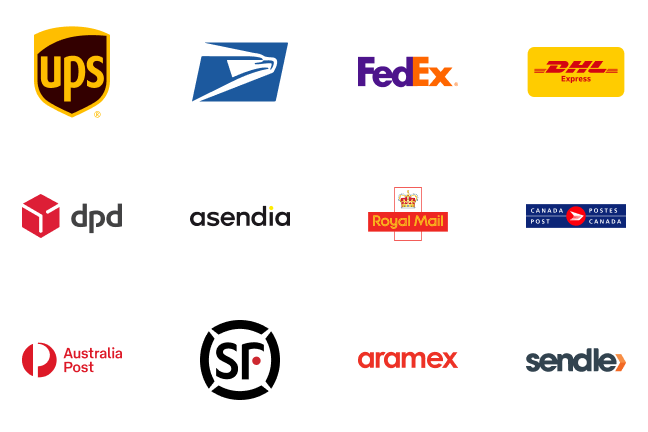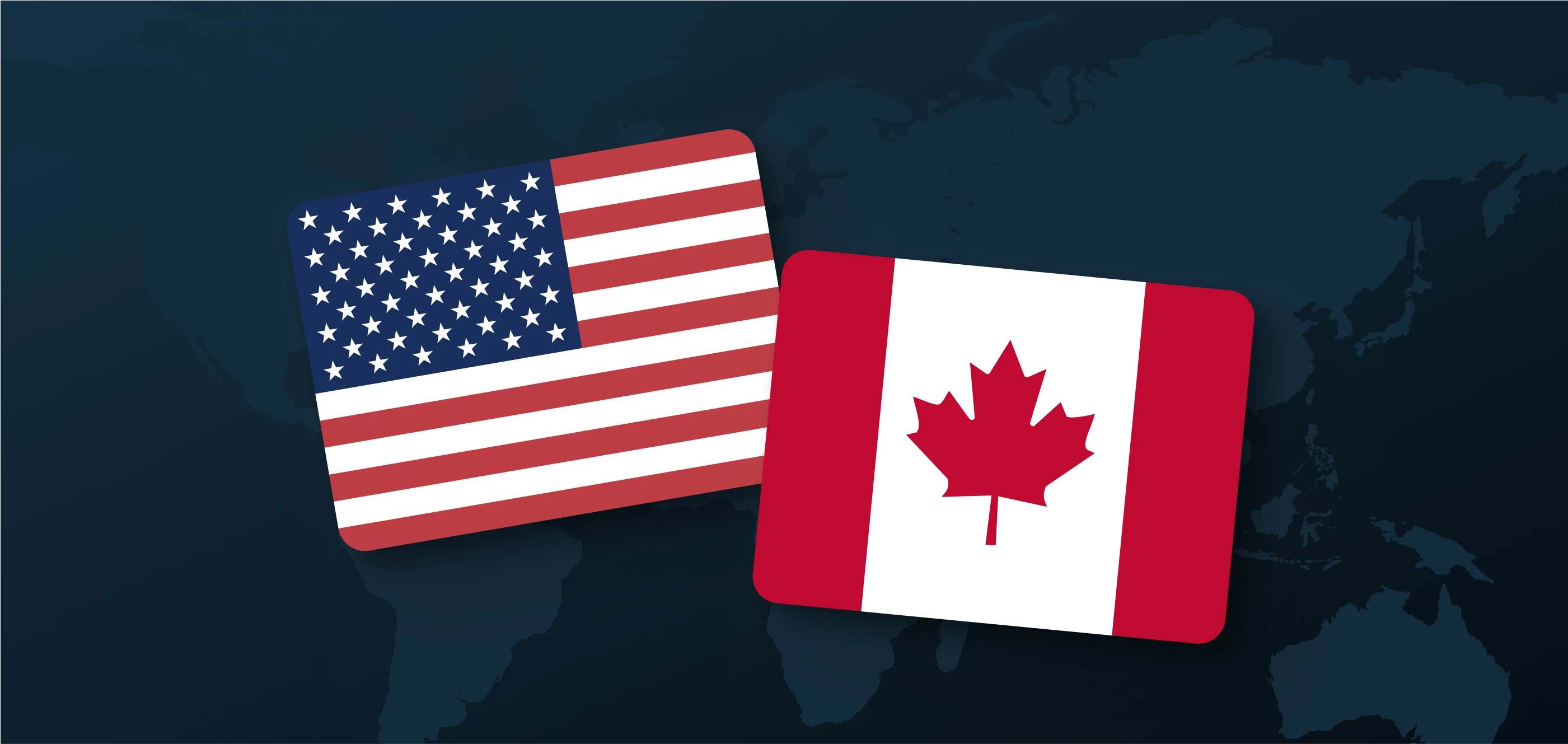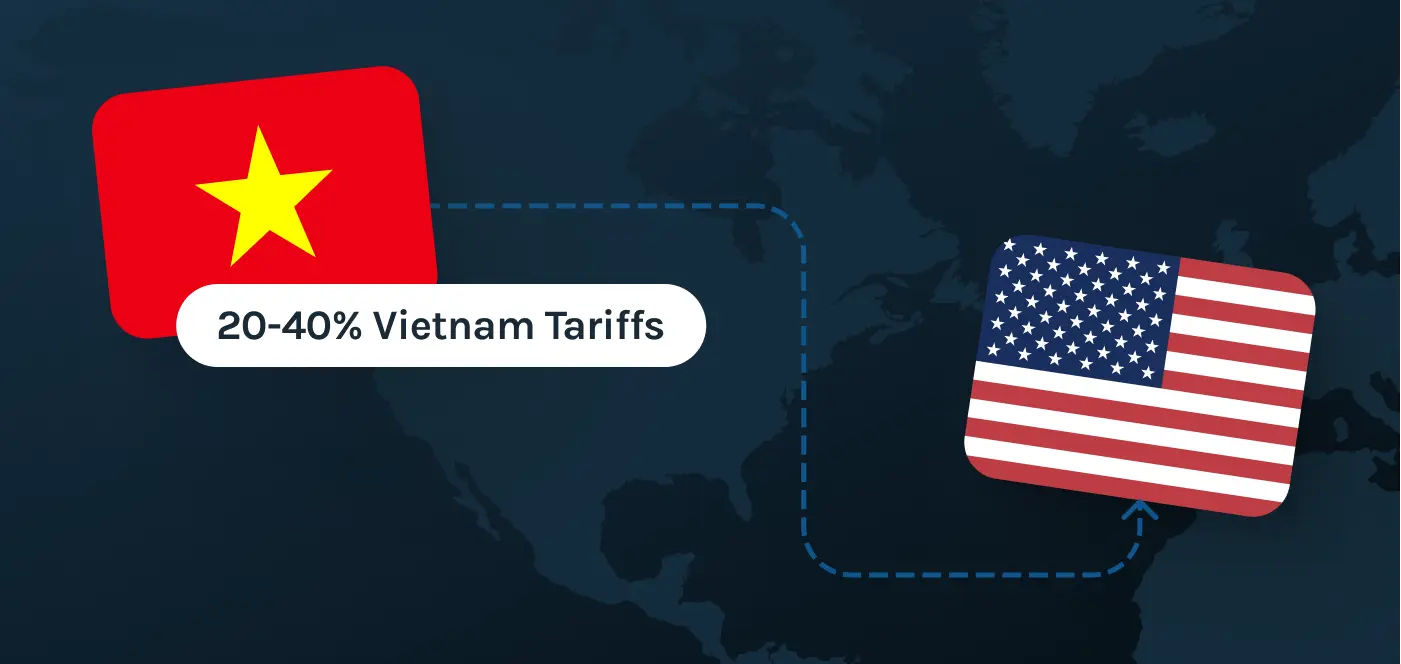If you’re running an eCommerce business or exporting goods from India, you’re likely to watch “India tariffs” headlines closely. The U.S., under President Trump, has dramatically raised duties—now imposing up to 50% tariffs on Indian imports.
These moves stem from political friction over buying Russian oil, putting exporters, especially in textiles and gems, in a tight spot.
This blog explains what the new tariff policy means for your bottom line—and how you can adapt and thrive.
What is the Trump Tariff?
The Trump tariff refers to the additional import duties imposed by US President Donald Trump on selected trade partners to influence their economic behavior.
These tariffs often target countries engaged in activities Washington sees as counter to US national interests—in India’s case, its buying of Russian oil.
These measures are designed to push India to reconsider its foreign policy and trade alliances, especially regarding its relationships with Russia, China, and the US.
If you want a full global overview of Trump’s tariffs across all affected trade partners, check out our in-depth guide on the Trump Tariff and how it impacts international shipping and tariff policies.
India's Ministry of External Affairs has been actively involved in diplomatic briefings and trade negotiations in response to these tariffs.
How much does Trump want to tariff India?
India is now facing punitive tariffs of 50% on most of its exports to the US—up from 25% earlier this year.
These new tariffs will come into effect on August 27, 2025. The increase follows President Trump’s signing of an Executive Order under the Trade Expansion Act of 1962, citing India’s continued Russian oil purchases despite global sanctions.
Before the hike:
- The base tariff rate was already 25% following the April 2025 Executive Order targeting Russian oil importers.
- Some categories, like electronics and pharma, remained exempt. India insists its trade decisions, including continued Russian oil purchases, are based on market factors and the need to maintain national energy security.
After the hike:
- Nearly all of India’s $86.5 billion in annual exports to the US, including textiles, gems and jewelry, and other labor-intensive goods, will be affected.
- Only certain goods listed in Annex II of the April order will remain exempt.
Here’s a table summarizing what this looks like:
| Product Category |
Typical Export Price (U.S. buyer pays) |
After 50% Tariff |
Price Increase |
| Cotton Men’s Shirt |
~$7.73 per shirt exported from India |
~$11.60 |
+$3.86 (+50%) |
| Handcrafted Gold Jewelry |
~$1,500 per piece (estimate) |
~$2,250 |
+$750 (+50%) |
| Gems & Polished Diamonds |
No duty previously; now taxes would apply based on value—for a $10,000 piece: |
~$15,000 |
+$5,000 (+50%) |
As a result of the tariffs, buyers may switch to products made in other countries.
Why did Trump Tariff India?
The Trump administration imposed these additional tariffs because New Delhi continues to import Russian Federation oil, which, according to Washington, indirectly funds Russia’s war machine in Ukraine.
According to the White House, India not only buys Russian crude but also resells it on global spot benchmarks at a price differential, generating profits that benefit Moscow. The administration told Bloomberg it would clarify the scope of the tariffs to address market concerns.
This move is part of a broader US strategy to pressure Russia through its trade partners, discouraging oil imports from sanctioned nations. US officials have emphasized the importance of enforcing these tariffs in recent trade negotiations.
Impact of the Trump Tariff on India
The United States is India’s largest export destination, accounting for around 18% of all Indian exports and contributing approximately 2.2% of India’s GDP (according to the Knowledge and News Network, India).
According to a recent Bloomberg survey of economists, India's GDP growth is projected to slow down as a result of these new tariffs, highlighting concerns about the country's economic resilience to external shocks.
The new US tariffs threaten the Indian economy in a number of ways.:
India’s Key Market in the US is Now at Risk
With the sudden imposition of 50% tariffs on Indian goods, exporters face an unprecedented challenge in maintaining competitiveness in the U.S. market.
- 18% of exports at stake — India’s apparel, jewelry, and agricultural products are heavily reliant on U.S. buyers.
- 2.2% GDP exposure — The new tariffs directly threaten a meaningful portion of India’s economic output.
- eCommerce sellers vulnerable — Smaller online businesses exporting via platforms like Amazon and Etsy may see their margins wiped out.
Tariffs Could Reduce GDP Growth by 0.2–0.4%
Economic analysts estimate that a jump to 50% tariffs on Indian exports could shave off 0.2–0.4% from India’s GDP growth in the coming year. This downturn would be driven by reduced demand from U.S. importers and a loss of price competitiveness.
- Lower export volumes — Businesses in apparel, gems, and processed foods may see orders decline sharply.
- Ripple effects in supply chains — Factories, logistics providers, and shipping companies will all feel the slowdown.
- Regional employment impact — Export hubs like Surat (diamonds) and Tirupur (textiles) could face job losses.
Goods Most Affected
Some Indian export categories are particularly vulnerable to the 50% tariff hike, especially those already competing in price-sensitive segments.
| Category |
Impact |
Example Price Change |
Market Shift |
| Textiles & Apparel |
Tariffs make Indian products less competitive. |
$20 shirt → $30 |
Buyers switch to products made in a different country |
| Gems & Jewelry |
High-value items become too expensive. |
$1,500 necklace → $2,250 |
U.S. jewelers change sourcing |
| Agricultural Products |
Price hikes disrupt demand. |
$15 basmati rice bag → $22.50 |
Cheaper brands replace Indian goods |
US restrictions on China AI chip sales have already impacted global chip markets, with American companies like Nvidia and AMD facing new regulatory and revenue-sharing challenges.
Similar measures could affect Indian electronics and tech exporters if trade tensions escalate.
Goods Less Affected
Not all exports are equally impacted. Electronics and pharmaceuticals currently remain exempt from the additional tariffs—for now—due to their role in U.S. manufacturing and healthcare supply chains.
- Pharma exports: India remains a top supplier of generic medicines to the U.S. market.
- Electronics components: Shipments tied to U.S. tech companies are not yet targeted.
This exemption offers some relief but could be revisited in future trade negotiations.
Exporters’ Concerns
Indian exporters warn that they cannot absorb more than a 10–15% rise in landed costs without losing their competitive edge. A 50% tariff pushes many products into unviable territory for U.S. buyers.
- Profit margins collapse — Many exporters operate on margins under 10%.
- High risk for small businesses — SMEs may not have the capital to pivot markets quickly.
- eCommerce logistics challenges — Higher duties increase cart abandonment rates in U.S. online stores.
Impact of India Tariffs on Businesses and the Way Forward
When higher tariffs hit suddenly, businesses face:
- Rising landed costs due to the extra duty: Landed cost is the total price of getting a product to the buyer, including manufacturing, freight, insurance, customs duties, and other fees. A new 50% tariff on a $1,000 shipment could instantly raise the landed cost to $1,500, squeezing profit margins or forcing sellers to increase prices.
- Longer shipping timelines if they re-route goods to other markets: To avoid high U.S. tariffs, exporters may re-route shipments to countries like the UK, Germany, or Singapore, where duties are lower. While this can preserve margins, it often adds 1–3 weeks to delivery times due to new port calls, customs processing, and inland transportation.
- Uncertain demand from U.S. buyers: Higher retail prices can make U.S. buyers hesitant to place large or repeat orders, especially for non-essential or luxury items. For example, a jewelry wholesaler may scale back orders until they see how the market responds, leading to unpredictable sales cycles for exporters.
How Indian exporters are adapting:
- Shifting fulfillment to other trading hubs with lower tariffs: Some exporters are moving inventory to tariff-friendly locations like the UAE or Hong Kong, which have favorable trade agreements with the U.S. A textile exporter, for instance, might store stock in Dubai and ship directly from there to avoid India-origin tariffs.
- Exploring alternative markets in European nations and Southeast Asia: Diversifying sales channels can spread risk. A handicraft seller targeting U.S. buyers may now expand into markets like France, Japan, or Australia, where duties are lower and demand for artisanal goods is growing.
- Reviewing courier prices and recalculating margins: With tariffs inflating costs, exporters are comparing rates from multiple couriers to find the cheapest shipping options for each lane. An apparel brand might switch from express air freight to economy air or hybrid services to balance speed and cost.
- Looking into 3PL fulfillment based in the U.S. to avoid some import costs: By storing goods in U.S.-based warehouses, exporters can bulk-ship inventory once (paying the tariff upfront) and then fulfill domestic orders without incurring repeated import duties. A jewelry exporter could save significantly on smaller repeat shipments this way.
How Easyship helps:
- Automated tariff calculations for accurate landed cost estimates.
- Integrated export licenses and compliance tools to streamline customs.
What was the tariff on India before Trump?
Before President Donald Trump’s April 2025 action, most Indian imports to the US faced standard tariffs in the low single digits, depending on product classification. The jump to 25% in April was the initial levy shock, followed now by the proposed raising of tariffs to 50%.
What is the retaliatory tariff by India?
At present, the Indian government has not announced formal retaliatory tariffs in response to the Trump tariffs. However, India has a precedent—such as in 2019, when it imposed tariffs on 28 US products including apples and almonds after US duties on steel and aluminum.
If India responds this time, likely targets could be:
- Agricultural imports from the US.
- High-profile US consumer brands like Coca-Cola or processed food items.
A Turning Point in India-USA Relations
The current tariff policy marks a serious turning point in India–US economic cooperation. Trump's tariffs have reshaped the landscape of India-US economic cooperation, introducing new challenges and opportunities for both nations. With tariff negotiations scheduled in the coming weeks, Prime Minister Narendra Modi faces a decision: adjust oil imports to align with US demands, or stand firm on energy security and risk a prolonged tariff war. Donald Trump's trade policies continue to influence negotiations and business strategies between the two countries.
For businesses trading between the two countries, tools like Easyship provide a vital advantage—automating compliance, optimizing routes, and helping exporters navigate volatile tariff policies without losing their competitive edge.
Ready to simplify and save on shipping?
Easyship is here to help.
Easyship helps eCommerce sellers stay profitable in a changing trade environment. With reciprocal tariffs, customs duties, and new rules for cross-border orders, our free shipping tools and smart dashboard are built to help you ship smarter and sell globally—without the stress.
FAQ — India Tariffs
What is the current tariff rate imposed on Indian goods by the U.S.?
The U.S. now imposes up to a 50% tariff on many Indian exports, particularly those linked to textiles, gems, and auto components.
Which Indian exports are exempt from these tariffs?
Electronics, pharmaceuticals, and energy-related products are currently exempt from the added duties.
Why did the Trump administration raise tariffs on India?
Because India continues importing Russian oil, which the U.S. argues undermines sanctions and indirectly supports Russia’s actions in Ukraine.
Is there a trade deal or tariff negotiation happening between India and the U.S.?
Trade talks have stalled, with President Trump saying there will be "no trade negotiations" until the tariff dispute is resolved.
How can exporters manage these higher tariffs?
Options include logistics rerouting, diversifying markets, securing government export financing, and using platforms like Easyship for integrated visibility and cost control.















































.svg)
.svg)






.avif)
.avif)

.avif)
.avif)


.avif)


.avif)










.avif)
.avif)



.avif)
.avif)


.avif)
.avif)


.avif)










.svg)









